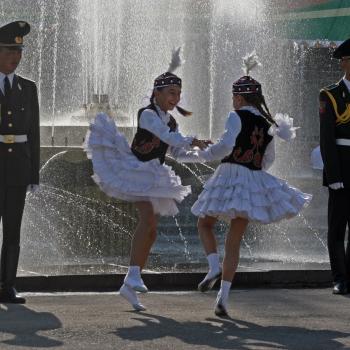There is still much to be discovered about the crafts and techniques of metalwork, ceramic and sculpture in sixteenth to nineteenth century Iran, Afghanistan, Transoxania, Western China and India. In all of these countries there are surviving artefacts in copper, bronze, steel, gold and silver, as well as ceramics and sculpture. Weapons were also produced in these materials, although very few survive from before the nineteenth century.
The art of healing was very important in Buddhism, since the Buddha himself emphasized that health is among the most precious goods a person can possess. Hospitals were established in the Sri Lankan capital Anuradhapura from the 4th century BC onwards, and several Sri Lankan kings had medical knowledge. A large number of hospitals for different diseases were subsequently set up in the country, which were used both by the people and by Buddhist monks.
While there an overlapping of cultures of East and West via the Silk Routes usually occurred throughout history, the peninsula of Korea, however, restricted itself to mostly ‘absorbing’ cultural and artistic influences from far and wide and few traces of Korean culture have been found in Central Asia. Evidence of this cultural and material appropriation can be found in several tumuli, including buckled belts with a Scythian zoomorphic influence, Roman and Germanic glassware, central-Asian inspired metalwork, Chinese-inspired painting techniques.
The sciences of alchemy, chemistry and medicine originated in China, Egypt, and India, but all underwent important developments in Islamic Asian countries and in Tibet and Mongolia throughout the Middle Ages. Natural deposits of metals in Central Asia encouraged alchemy and experimentation with metallurgic materials, as witnessed by the large number of Arabic treatises dealing with science. Tibet and Mongolia also made a large contribution to the study of pharmacology and pharmaceutics, with influences from India combining with those of east and west
Paper first appeared in China in the 2nd century BC, and it was massively diffused from the 2nd century AD onwards. Paper making techniques evolved significantly during the first centuries of our era. The new material was used for various purposes, and it progressively replaced wood tablets, bamboo tablets, and eventually silk as a support for writing. Paper was exported to neighbouring countries, such as the kingdom of Silla on the Korean peninsula, Japan, Vietnam, and later Tibet and India.
Persian and Arab sailors were the first to venture into the open sea outside the view of the coast. As a result, they had to elaborate universal systems of navigation based on the positions of the stars. According to literary sources, Chinese pilots had sailed into the open sea on their way to the Malay Peninsula by the 7th century. By the 15th century, they used similar navigation systems to their Persian and Arab predecessors.
The use of sea-charts as an aid to practical navigation was in vogue much before the advent of the European colonial traders in the North Indian Ocean is almost an accepted fact. Yet, such sea-charts do not appear to have survived on the Indian, Arab or African shores. Marco Polo, on his return voyage from China to Venice towards the end of 13th century, is reported to have seen the use of sea-charts by Indian seamen.







